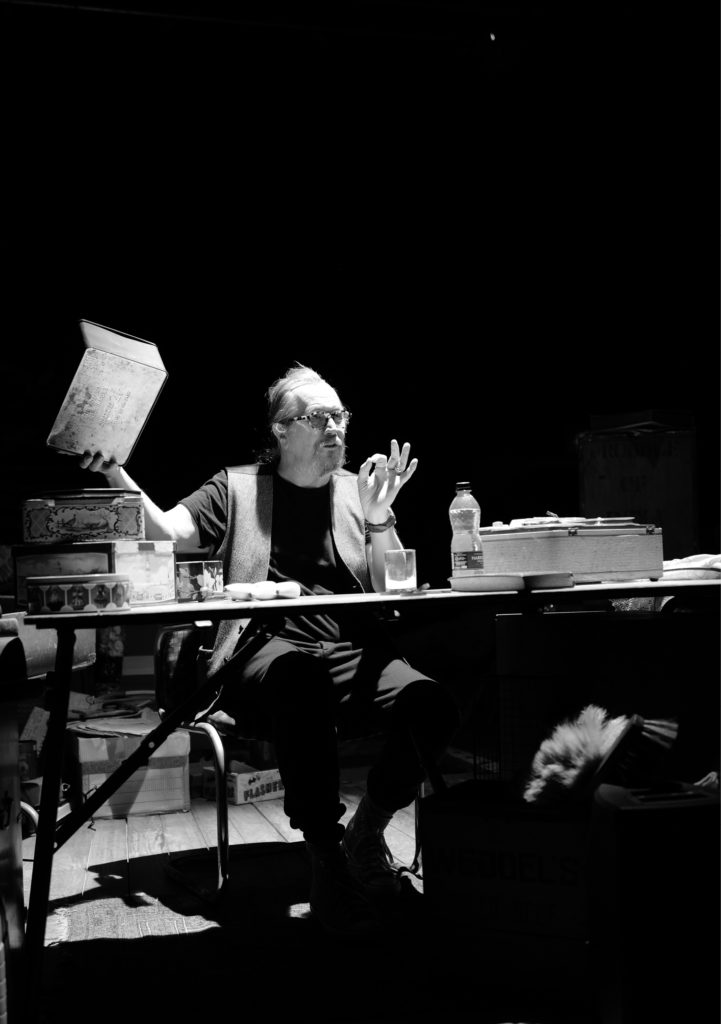
Gary Oldman in rehearsal for Samuel Beckett’s Krapp’s Last Tape. Picture: Gisele Schmidt
GARY Oldman’s return to the York Theatre Royal stage after 45 years in Samuel Beckett’s Krapp’s Last Tape from today had sold out, but a combination of returns and additional seats are newly available. Hurry, hurry.
Once the pantomime Cat that fainted thrice in Dick Whittington in his 1979 cub days on the professional circuit in York, Oscar winner Oldman now directs himself – and provides the set design too – in Beckett’s melancholic, tragicomic slice of theatre of the absurd in his first stage appearance since 1987.
“York, for me, is the completion of a cycle,” says Oldman.“It is the place ‘where it all began’. York, in a very real sense, for me, is coming home. The combination of York and Krapp’s Last Tape is all the more poignant because it is ‘a play about a man returning to his past of 30 years earlier’.”
What happens over the course of 50 minutes in Krapp’s Last Tape? Each year, on his birthday, Krapp records a new tape reflecting on the year gone by. On his 69th birthday, Krapp, now a lonely man, is ready with a bottle of wine, a banana and his tape recorder. Listening back to a recording he made as a young man, Krapp must face the hopes of his past self.
Oldman, who turned 67 on March 21, now takes on a role premiered by Patrick Magee in 1958 and since played by the likes of Albert Finney, Harold Pinter, John Hurt, Stephen Rea and Kenneth Allan Taylor, the long-running Nottingham Playhouse pantomime dame, writer and director, in the play’s last performance at York Theatre Royal in 2009.
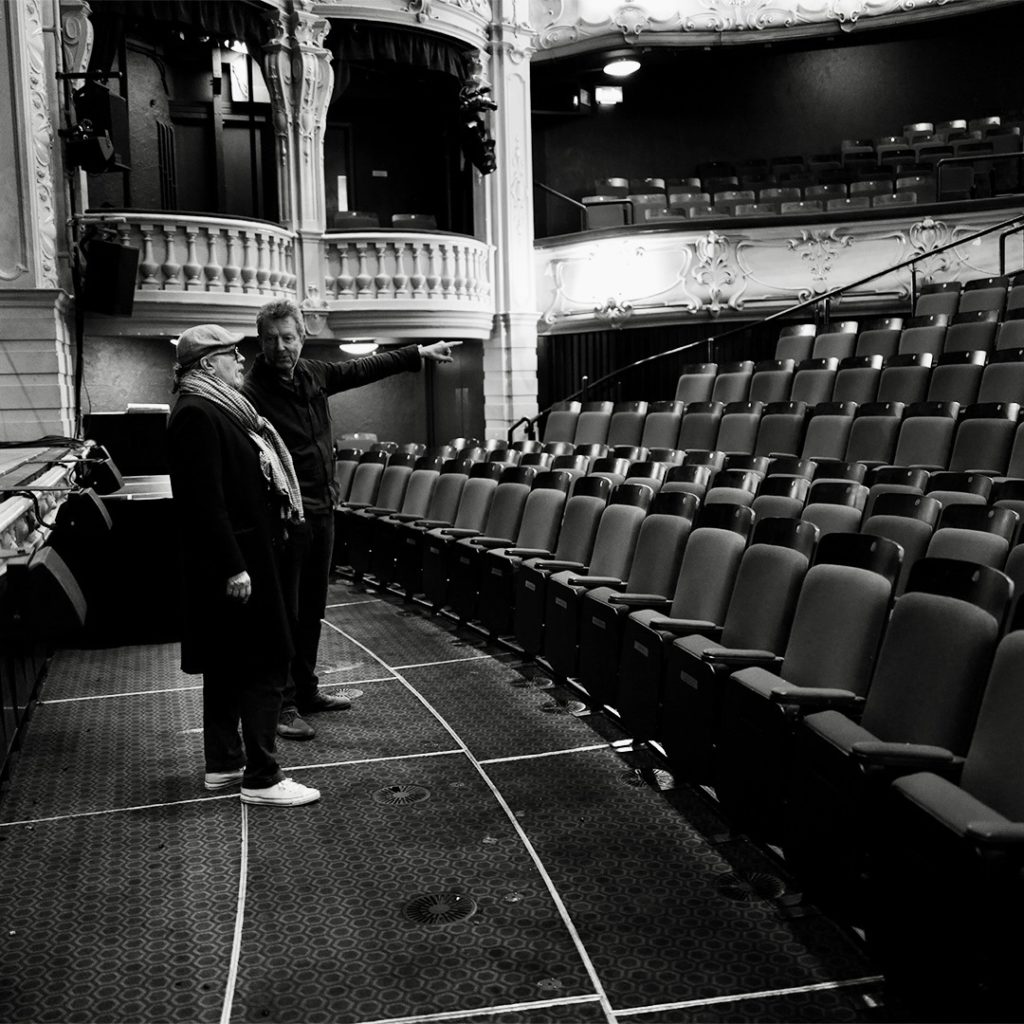
Gary Oldman with York Theatre Royal chief executive Paul Crewes surveying the main house auditorium
Oldman has been considering going back to the stage for a long time. “I have never been far from the theatre and, in fact, have been discussing plays and my return to the theatre for nearly 30 years,” he posted on Instagram.
The April 14 to May 17 production of Beckett’s one-act monodrama was set in motion in March 2024, when Slow Horses star Oldman paid a visit to the St Leonard’s Place theatre , where he met chief executive Paul Crewes.
“When Gary visited us, it was fascinating hearing him recount stories of his time as a young man, in his first professional role on the York Theatre Royal stage,” says Crewes. “In that context when we started to explore ideas, we realised Krapp’s Last Tape was the perfect project.”
The youngest of three children in a working-class London family, Oldman left school at 16 and began acting in productions with Greenwich and Lewisham Young People’s Theatre.
He applied for RADA (Royal Academy of Dramatic Art) but his rejection came with the advice to do something else for a living. Advice that he ignored, instead winning a scholarship to Rose Bruford College of Speech and Drama, from where he graduated with a BA in acting in 1979.
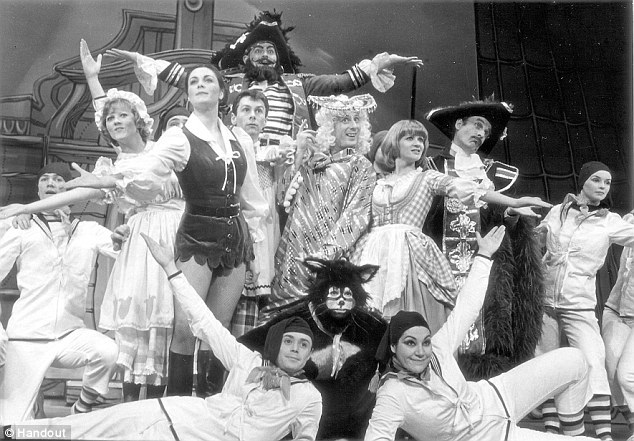
Pantomime puss: Gary Oldman’s Cat, with Berwick Kaler’s dame, centre, in Dick Whittington And His Wonderful Cat at York Theatre Royal in 1979-80
Whereupon he headed north to start out in the repertory ranks at York Theatre Royal in 1979 in a repertory season of nine shows, taking in She Stoops To Conquer, Thark, Privates On Parade and Romeo And Juliet, topped off by playing the Cat in furry suit, mittens and nylon whiskers in Berwick Kaler’s third York pantomime, Dick Whittington And His Wonderful Cat, that Christmas.
Dame Berwick later told the Guardian in an interview in 2018: “Gary has gone on to become one of our greatest screen actors but I’m afraid he was a bit of a lightweight when it came to pantomime.
“He kept fainting inside the costume. On at least three occasions I had to turn to the audience and say, ‘Oh dear, boys and girls, I think the poor pussy cat has gone to sleep’!”
Another actor in the rep company, Michael Simkins, has recalled the “bruising schedule of 50 performances in seven weeks, not to mention the drunken and relentless partying in various digs and rented bed-sits after curtain down”.
Oldman moved on to the Colchester rep and Glasgow Citizens Theatre, where he performed with Rupert Everett. He has called his time there “a coming of age – the work was joyful, bold and exhilarating. In the years that followed no other theatre experience could match it,” he said.
While appearing in Edward Bond’s controversial play Saved at the Palace Theatre, in Westcliff, he was “spotted” by Royal Court Theatre director Max Stafford-Clark. Or, rather, he had Oldman drawn to his attention – by Oldman himself.
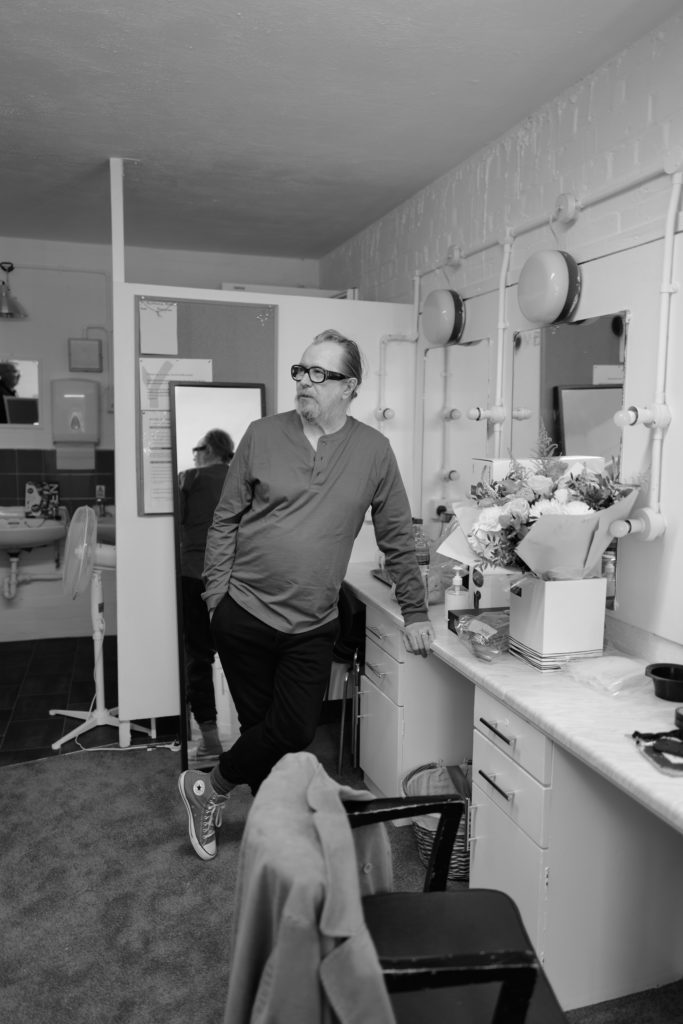
Gary Oldman in the York Theatre Royal dressing rooms. Picture: Gisele Schmidt
Like many young actors, he had written to the director setting out why he wanted to work at the cutting-edge London theatre. Stafford-Clark recalls that “it was a particularly well-argued letter”, so he went to see Saved.
Many of the audience – only about 30-strong – walked out but the director duly cast him in Bond’s The Pope’s Wedding, at the Royal Court. Saved, meanwhile, won him the British Theatre Association Drama Magazine award for 1985 and the Time Out Fringe award as best actor.
Roles ensued with the Royal Shakespeare Company and at the Royal Court in new works by Bond and Caryl Churchill. Harold Pinter was lined up to direct him in his play The Caretaker in the West End.
Oldman’s last stage performance was in 1987 in Churchill’s satirical play Serious Money at the Royal Court. By then, he had appeared in his break-out screen role as damaged punk Sid Vicious in Sid And Nancy, his 1986 alarm call to herald a career in films that have grossed 11 billion dollars. “I never thought I’d get into films in a thousand years,” he once said.
Today, he opens in a theatre show for the first time in 38 years, back in York for his “completion of a cycle”, banana in hand in Krapp’s Last Tape.
Gary Oldman in Krapp’s Last Tape, York Theatre Royal, April 14 to May 17. Box office: 01904 623568 or at yorktheatreroyal.co.uk.
Gary Oldman’s programme note for Krapp’s Last Tape: Returning Home
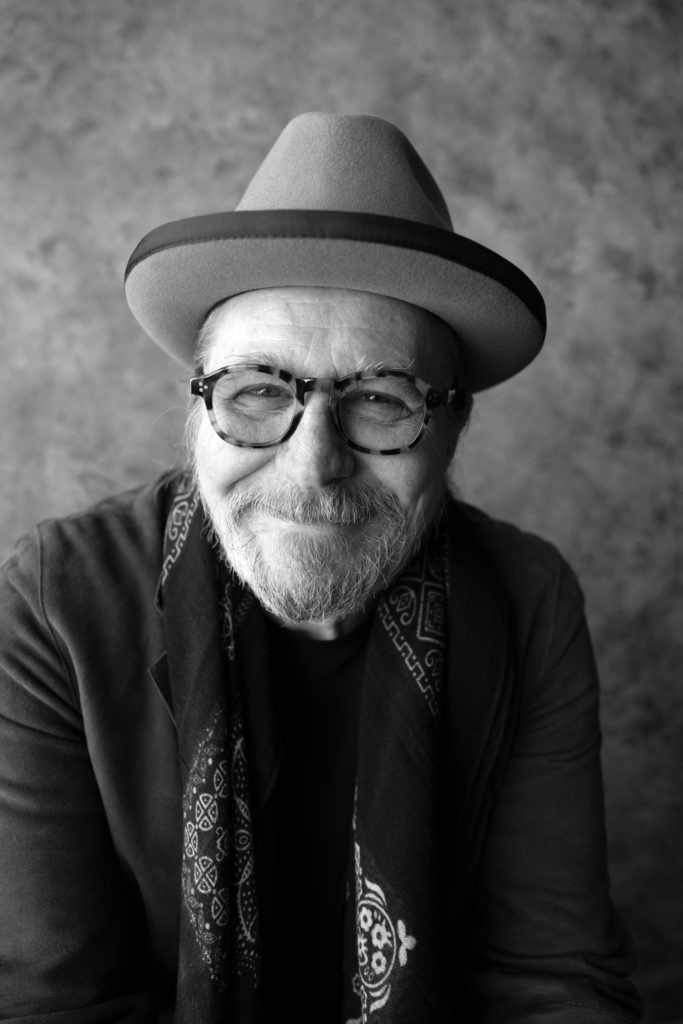
Gary Oldman: Picture: Gisele Schmidt
“I MADE my professional public acting debut on the stage in front of you. It is on that stage, over four decades ago, I gained confidence and self-discipline; no small thing. More importantly, I learned a work ethic – one that has never left me to this day.
“It’s impossible to think that I have spent nearly the entirety of my professional life since then in front of the camera. But, camera or not, the theatre never leaves you. Shortly after I entered the world of film, I met Douglas [Urbanski], my producing partner, whose roots in the theatre were as deep as it gets.
“In the thousands of conversations we have had, spanning more than 30 years, a theatre reference or an anecdote or experience is almost always present. We both pull from a giant mental museum of theatre references, knowledge and experience. And, he and I, in fact, have been discussing plays and my return to the stage since the day we met.
“Recently my wife, Gisele [Schmidt], and I adapted a television comedy pilot based solely in and around a British theatre. The writing process, as you might imagine, was punctuated with fond remembrances of my days on the boards.
“It was this project, in part, that reignited the conversation. If I were to do a play, where would I do it? We danced around the usual suspects and ultimately landed on York Theatre Royal. After all, it is the where it all began. York, in a very real sense, for me, is coming home. I met with YTR’s chief executive, Paul Crewes, and the play, the how, and the when , were mapped out.
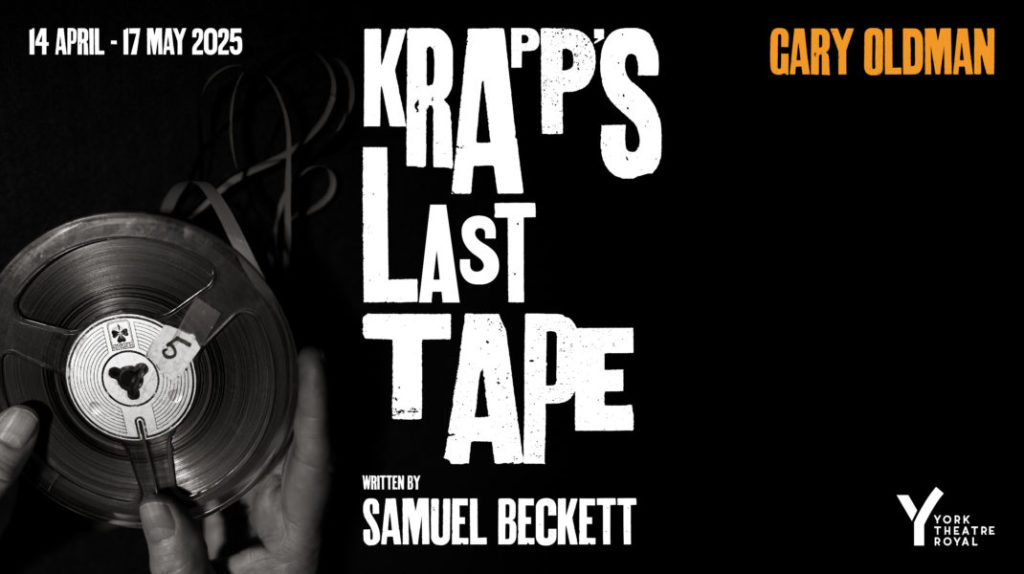
The poster for Gary Oldman’s return to York Theatre Royal after 45 years in Krapp’s Last Tape, performed, directed and designed by the erstwhile pantomime puss
“York Theatre Royal is one of the oldest theatres in England, with a rich and varied history dating back to 1744. This ancient building still holds many charms, but has undergone some massive redevelopment.
“You no doubt entered through the glass and concrete extension on the building’s north face. A 1960s addition by architect Patrick Gwynne. A new cafe, box office, studio theatre, and a renovation to the main auditorium were completed in 2016.
“Yet, despite all the structural upgrades, the same old challenges remain. Finding funding, the upkeep of the building, and, more importantly, getting the people to come. It’s not easy. There are just too many distractions for the eyes, ears, and pulling at one’s purse strings, particularly for the new, younger audience.
“I think it’s important to remember, for those who live outside London, a local theatre is their only access to the arts. Without a local theatre, the younger generation will never get the chance to see theatre. We need these future generations if theatre is to thrive.
“I hope this production of Krapp’s Last Tape whets the appetite, giving those new to the theatre a completely revelatory experience. And who knows? It may encourage them to visit the theatre again. And again. And again. They may even invite a friend. And hopefully a devoted theatregoer, or two, will emerge!”
Programme note: copyright of York Theatre Royal
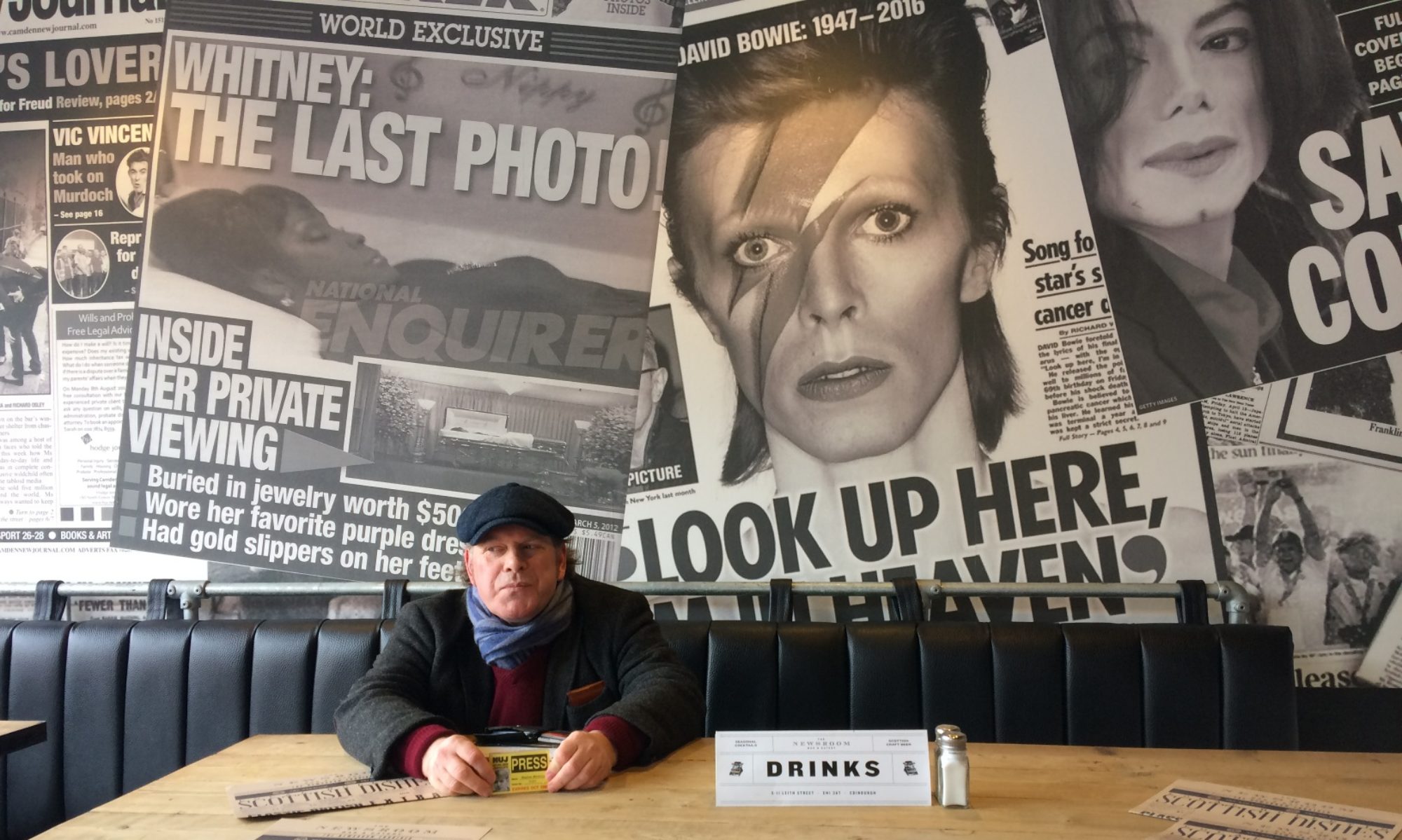
Oh dear, Amanda Brawn… I was also in the audience for the opening night of Krapps Last Tape and was mesmerised by Gary Oldman’s performance – it was an absolute master class of acting! From the moment he appeared – climbing stairs from under the stage – every action, facial expression and utterance was superb. The standing ovation and three curtain calls spoke volumes. Samuel Beckett at his best. ??
My husband and I travelled to York to see Gary’s Oldman’s opening night in this show. It was an Easter treat. It took us four hours in the car and we had to book a hotel too. The whole trip cost us £450 including tickets for the show.
We only went to the show because of Gary Oldman’s appearance in it and sat in row B in the stalls. We were both so excited to see him.
I was extremely disappointed that a 50 minute show had hardly any talking from Gary. He ate his bananas yes and that was quite entertaining. He did make several noises whilst eating the bananas or gave several facial expressions whilst he was listening to the tape.
I thought the play was particularly boring and I’m an avid theatre goer. I was extremely disappointed that there was so little of Gary really acting in the show. Him sitting in a chair and looking at the tape recorder, turning it on and off over and over again was really dull.
I’m so sorry about this review because I would go to see Gary Oldman in a different play in an instant. It was the only play ever that I’ve seen where I wanted to leave. I really can’t understand why he chose to perform this on his return to the stage. It was such bad value for money.
Thank you for your comment Amanda. I too absolutely love Gary’s work, but after investigating the production and reviews, I am sad to decide that I won’t be making the journey from my home to see it alone. As I don’t feel that I would enjoy a taped Gary, with little live acting. As I believe he is extremely talented and the play would just frustrate me. I will therefore, be patient and hope that he does another stage production soon. As it’s on my bucket list to see him perform live. Thanks for your review.